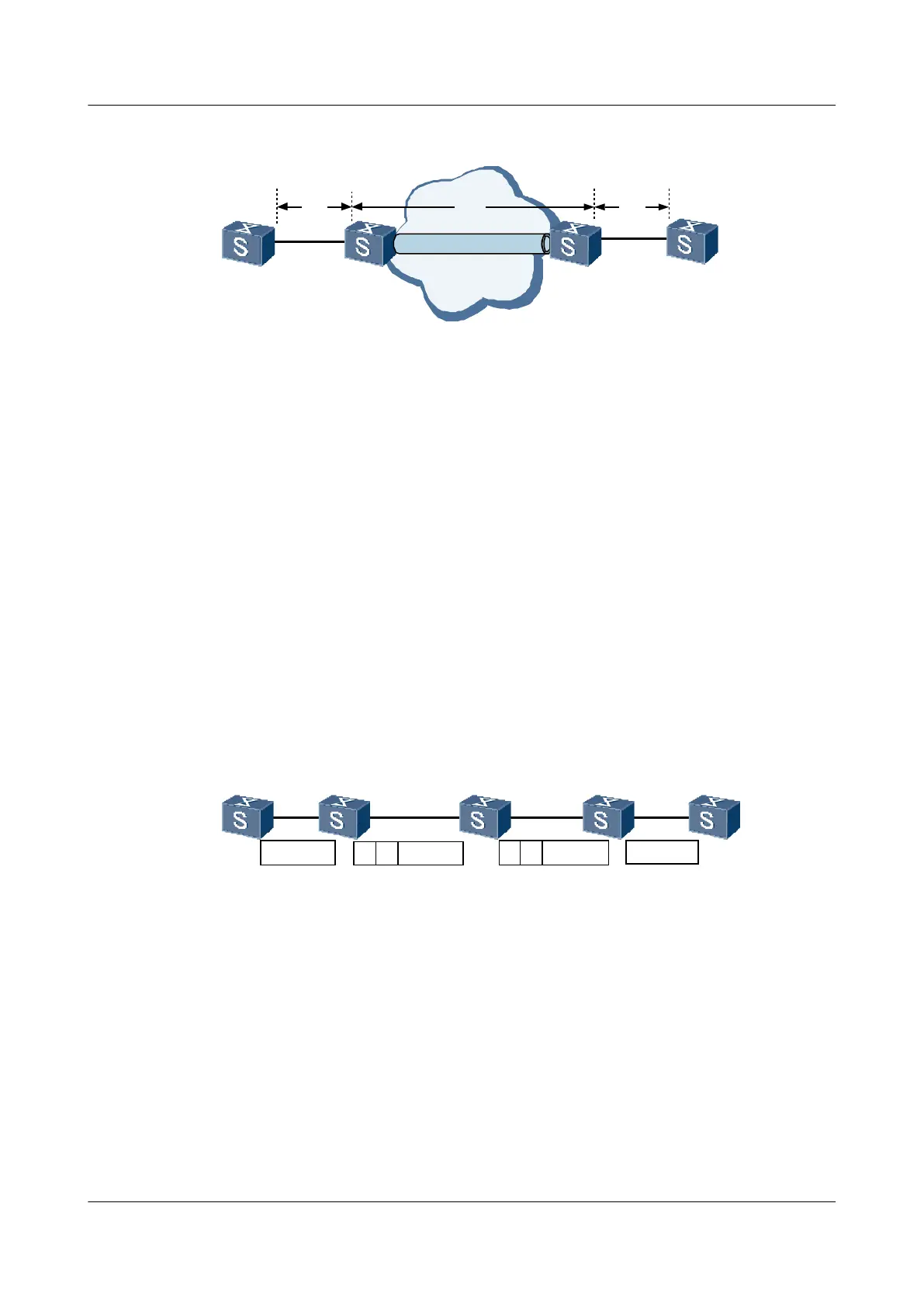Figure 4-1 VLL model
PECE CEPE
MPLS Network
ACAC VC
Tunnel
l AC: refers to the attachment circuit. An AC is an independent link or circuit that connects
CE and PE. The AC interface may be a physical interface or a logical interface. The AC
attributes include the encapsulation type, MTU and interface parameters of specified link
type.
l VC: refers to the virtual circuit. A VC is a type of logical connection between two PEs.
l Tunnel: refers to the network tunnel. A tunnel transmits the user data transparently.
By using the label stack, VLL can transparently transmit user packets on an MPLS network.
l Outer label: also called tunnel label. It is used for transmitting packets from one PE to
another PE.
l Inner label: also called VC label in the VLL. It is used to identify different connections
between VPNs. The PE on the receiver side transmits the packets to the corresponding CE
according to the VC label.
Figure 4-2 shows the change of packet labels when packets are forwarded through VLL.
Figure 4-2 VLL label processing
PCE 1 CE 2PE 1 PE 2
L2PDU L2PDUL2PDUT' VL2PDUT V
In Figure 4-2, Layer 2 Protocol Data Units (L2PDUs) are link layer packets; T indicates the
tunnel label; V indicates the VC label; T' indicates that the outer label is replaced in the
forwarding process.
4.2 VLL Features Supported by the S9300
This section describes the VLL features supported by the S9300.
CCC VLL
The Circuit Cross Connect (CCC) realizes the VLL through static configurations.
4 VLL Configuration
Quidway S9300 Terabit Routing Switch
Configuration Guide - VPN
4-4 Huawei Proprietary and Confidential
Copyright © Huawei Technologies Co., Ltd.
Issue 03 (2009-08-20)

